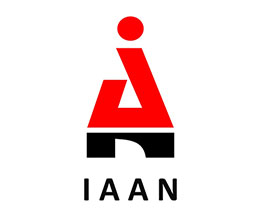
Role of social media in journalism
In today’s digital age, social media platforms like WhatsApp, Facebook, YouTube, Instagram, and Twitter (X) have become more than just networking tools. They are now key sources of news for millions of people in India. With smartphones in nearly every hand and low-cost internet, people are turning to their screens instead of newspapers or TV for updates.
This shift is reshaping how we consume, share, and interact with news. At IAAN School of Mass Communication, we recognize the power of this transformation and educate our students about the critical role of social media in modern media culture. Through both our academic courses and extracurricular activities, we prepare them to navigate and contribute to this evolving landscape.
Changing Patterns of News Consumption
1. News Anytime, Anywhere
People no longer wait for fixed news bulletins. Updates are now received instantly via phones and social feeds, often while on the move.
Example: During the Chandrayaan-3 mission, people followed ISRO’s progress live on Twitter and YouTube, making social media the go-to platform for scientific updates.
2. User-Generated Content
Social media has turned everyday citizens into news reporters, allowing them to share events as they happen.
Example: Videos from the Delhi Riots 2020, uploaded by residents, were later used by mainstream media and law enforcement for verification.
Key Platforms Reshaping News
WhatsApp: A major source for local news, especially in rural India, where people forward short news clips and audio updates.
YouTube: Popular for explainers and live coverage by independent journalists.
Twitter/X: Favored for breaking news and public reactions in real time.
Instagram & Facebook: Ideal for visual storytelling, especially on youth issues and social campaigns.
Positive Impacts
✅ Greater Access
People in remote areas now access news instantly. Multiple perspectives are available, not just those from national newsrooms.
Example: During the Farmer Protests, social media helped farmers directly share their voices with a national and international audience.
✅ Youth Participation
Young Indians are more informed and more involved, discussing political and social issues on platforms like Instagram Reels and YouTube.
✅ Independent Journalism Growth
Social media empowers independent journalists who work without backing from large media houses.
Example: Journalists like Faye D’Souza and Ravish Kumar use YouTube to reach millions.
Challenges We Must Address
❌ Fake News
Forwarded messages and viral posts often spread misinformation quickly.
Example: During the COVID-19 crisis, false remedies and vaccine myths spread fear among rural populations.
❌ Bias and Polarization
Algorithms show only content that matches users’ interests, creating echo chambers and polarised opinions.
❌ Lack of Regulation
Unlike print or broadcast, social media lacks proper oversight, leading to unchecked hate speech or propaganda.
IAAN’s Approach to Social Media and Media Education
At IAAN School of Mass Communication, we understand that tomorrow’s journalists must be fluent in both traditional and digital media. That’s why:
Our curriculum includes social media literacy, ethical content creation, and platform dynamics.
We regularly conduct practical workshops, debates, and digital journalism projects.
Our extracurricular activities, such as student-led campaigns, content labs, and simulated newsrooms, provide real-world exposure.
Students are encouraged to use tools like Alt News, BOOM Live, and PIB Fact Check to develop responsible news-sharing habits.
This approach ensures our graduates are not only informed users but also ethical content creators.
Social media is dramatically reshaping how Indians consume news. It’s fast, participatory, and accessible—but it also brings risks like misinformation and polarization. As educators and media institutions, we must ensure that this shift empowers rather than misguides our society.
At IAAN, we are committed to preparing students who understand the power and responsibility of digital platforms. With the right training, they can become truthful storytellers and informed media leaders in this evolving news ecosystem.
Tag:india, journalism, social media



